News
News / 04/28/2022 / 2886
GVOZDEN RADENKOVIĆ (1883-1945)
Although written history of Radenković family in Župa can be traced back to the beginning of the 19th century, only Gvozden Radenković had at his disposal the human and capital resources acquired by previous generations to engage seriously in viticulture and winemaking as well as wine wholesale, in addition to several other business activities.
Gvozden Radenković was born in 1883 in the village of Trnavci, in the heart of the wine-growing, beautiful and rich wine region of Župa, close to the town of Kožetin, which changed its name to Aleksandrovac shortly before his birth. Gvozden died in his village in 1945, fortunately not having lived long enough to see the triumph of the new Communist social order in the worst possible sense: murders, kidnapping, looting of property, nationalization and at the very end of 1954 resulting in disintegration of the family cooperative, unsustainable in the new circumstances, which pushed families of five brothers to part and set on independent business paths.
Already at an early age, as the first among equals with four other brothers and with capital that had already been seriously multiplied by three generations before him, Gvozden began to create a strong family cooperative that would engage in various activities and where at one point almost fifty family members lived in harmony under one roof.
Gvozden's ancestors, and above all his father Milun (1854-1913), who was the first to start viticulture and winemaking, engaged initially in heavy day labor, then traded pigs for the landlord's account on a commision basis, with long and risky transport to the bazaar in Pest (present-day Budapest). They soon became independent in the pig trade and expanded their activities to purchase and processing of leather skins. In the period between the two world wars, the family cooperative also owned a brick factory for production of bricks and tiles, where craftsmen from southern Serbia were hired to work.
The crucial thing is that father Milun bequeathed 15 hectares of land with fruit and vineyard plantations, as well as the tradition of wine production and sales to Gvozden and his brothers. So, already in 1922, the Radenković brothers built on it their first "magaza" (common name for a warehouse in Župa) with a capacity of 100,000 liters, whilst over the period 1930-1933, they gradually added a modern wine cellar with a total capacity of 450,000 liters. In those days, they produced and sold that much wine each year, both from their own and purchased grapes.
All that wine had to be sold, so the enterprising brothers threw themselves into catering business as well. What will be interesting to wine lovers today is that they sold wine in their own wine cellars, which were located as far south as Bitola, and as far north as Rijeka. Sales outlets also existed in Belgrade, as well as in Sarajevo, where they also owned a tavern.
In addition to the old house built in 1924 and in order to raise the quality of life and expand living space for the new members of the rapidly growing family, in 1932 the brothers built a large residential mansion in the style of Neo-Secession. In those days, the house had a large hall for family gatherings, a parquet floor, a telephone connection as well as a bathroom featuring a hot-water tank on the attick with a capacity of 1,000 liters which used gravity to bring hot water to the bathroom so that family members could bathe every day after hard work in the fields and in the wine cellar. A vine was planted againts the house wall, which survived until present day to witness silently the wine tradition of the family.
Gvozden and his wife Anka had two sons, Milun and Đorđe, the first of whom will unfortunately end his life tragically, which will be elaborated further below. Fortunately, the second son, Đorđe, will leave a serious mark on the foundations of wine tradition, both of the Radenković family itself, and of the entire wine industry of Serbia, and in a way also of post-war Yugoslavia.
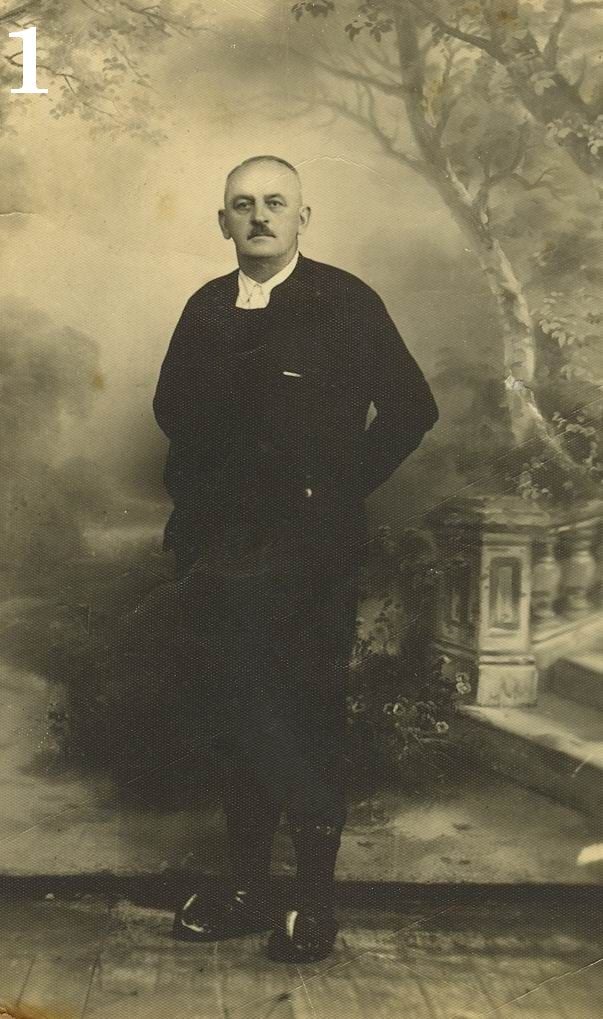 Gvozden Radenković
Gvozden Radenković
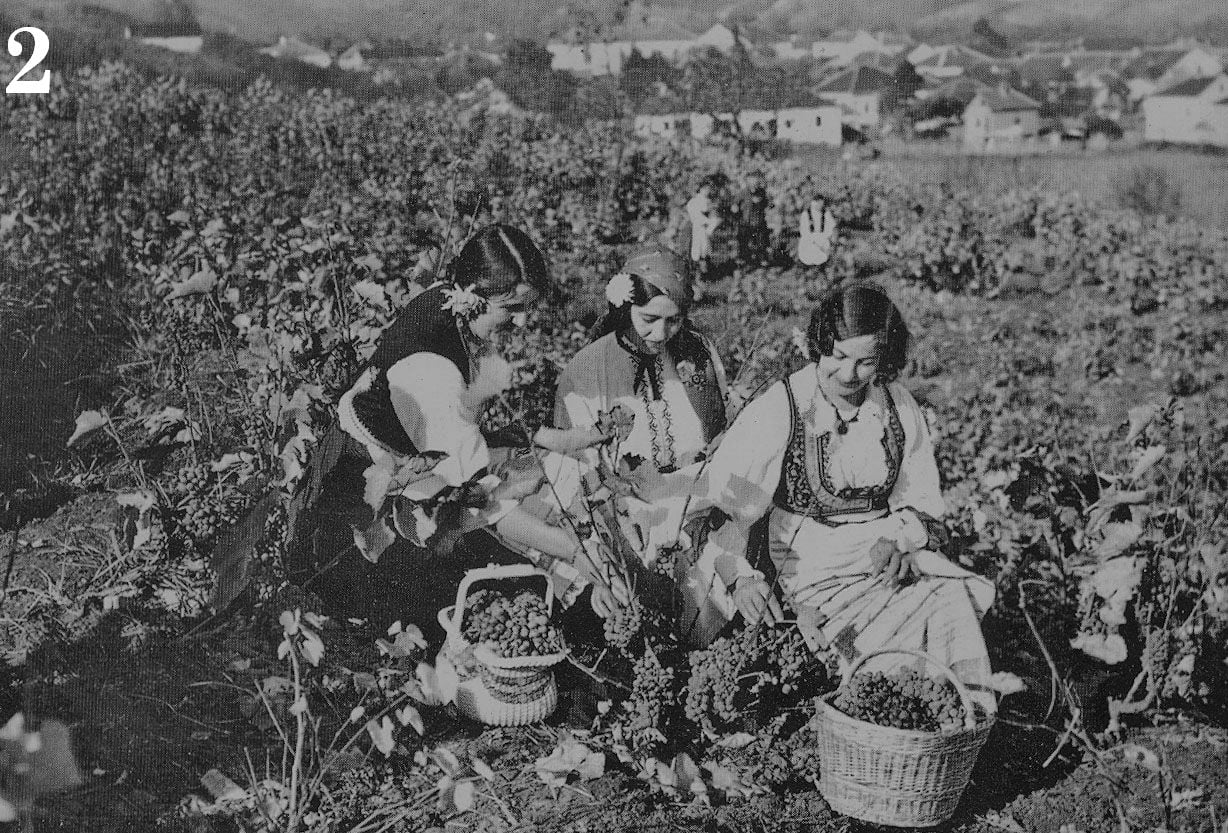 Grape harvest in Župa in 1930s
Grape harvest in Župa in 1930s
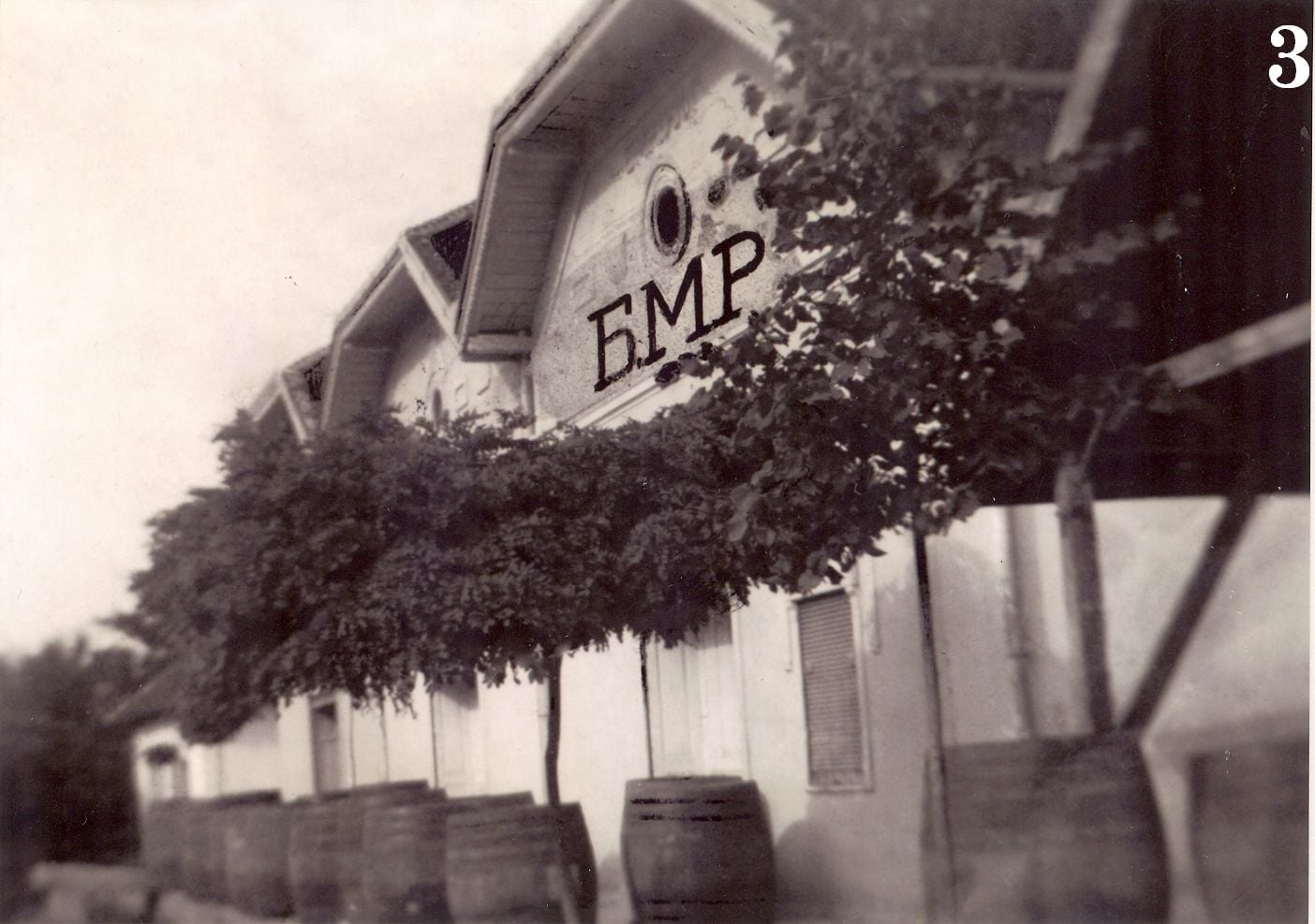 Wine cellar, total capacity of 450,000 lters in 1933
Wine cellar, total capacity of 450,000 lters in 1933
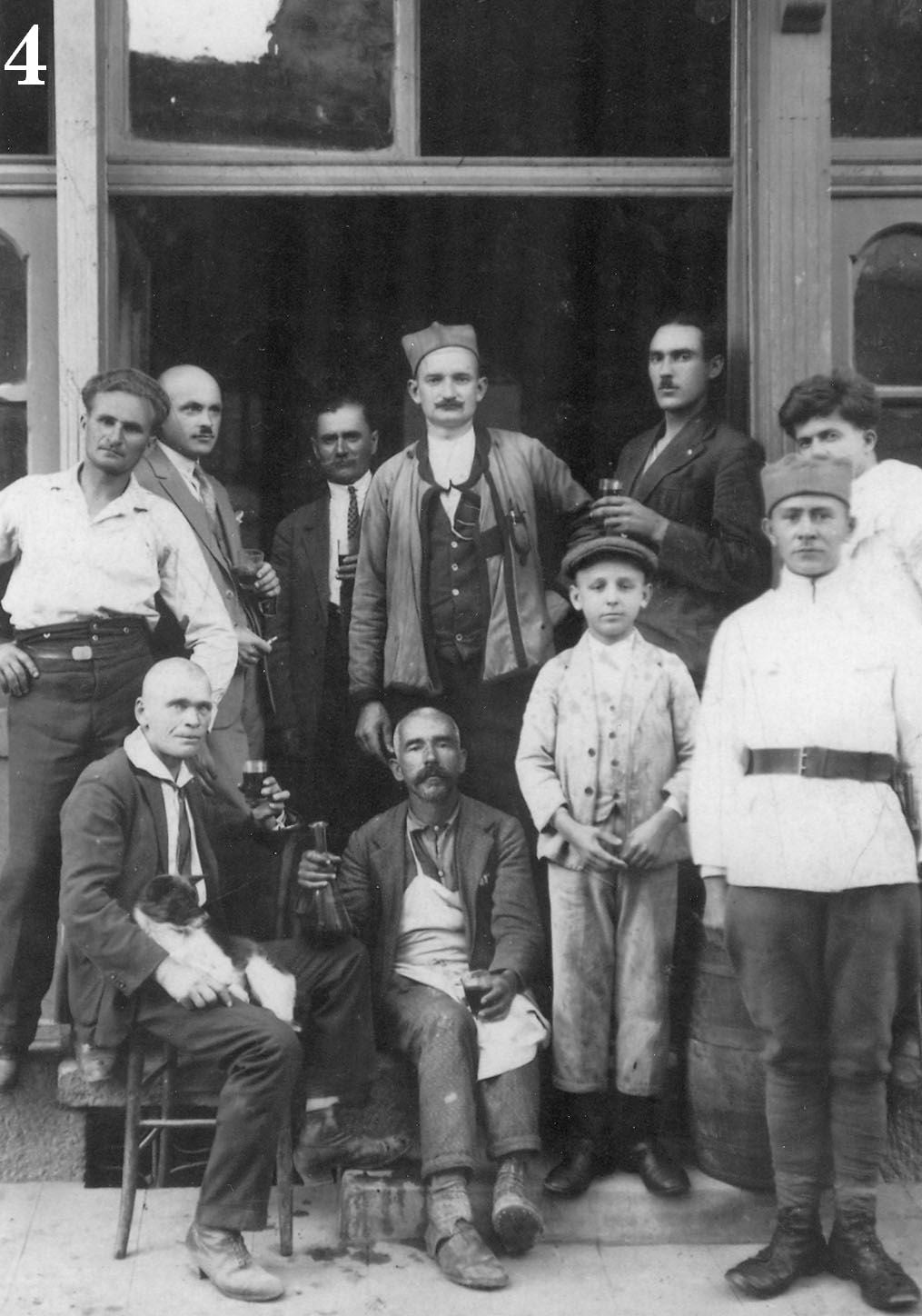
Gvozden's brother Radoje Radenković at the doors of a tavern
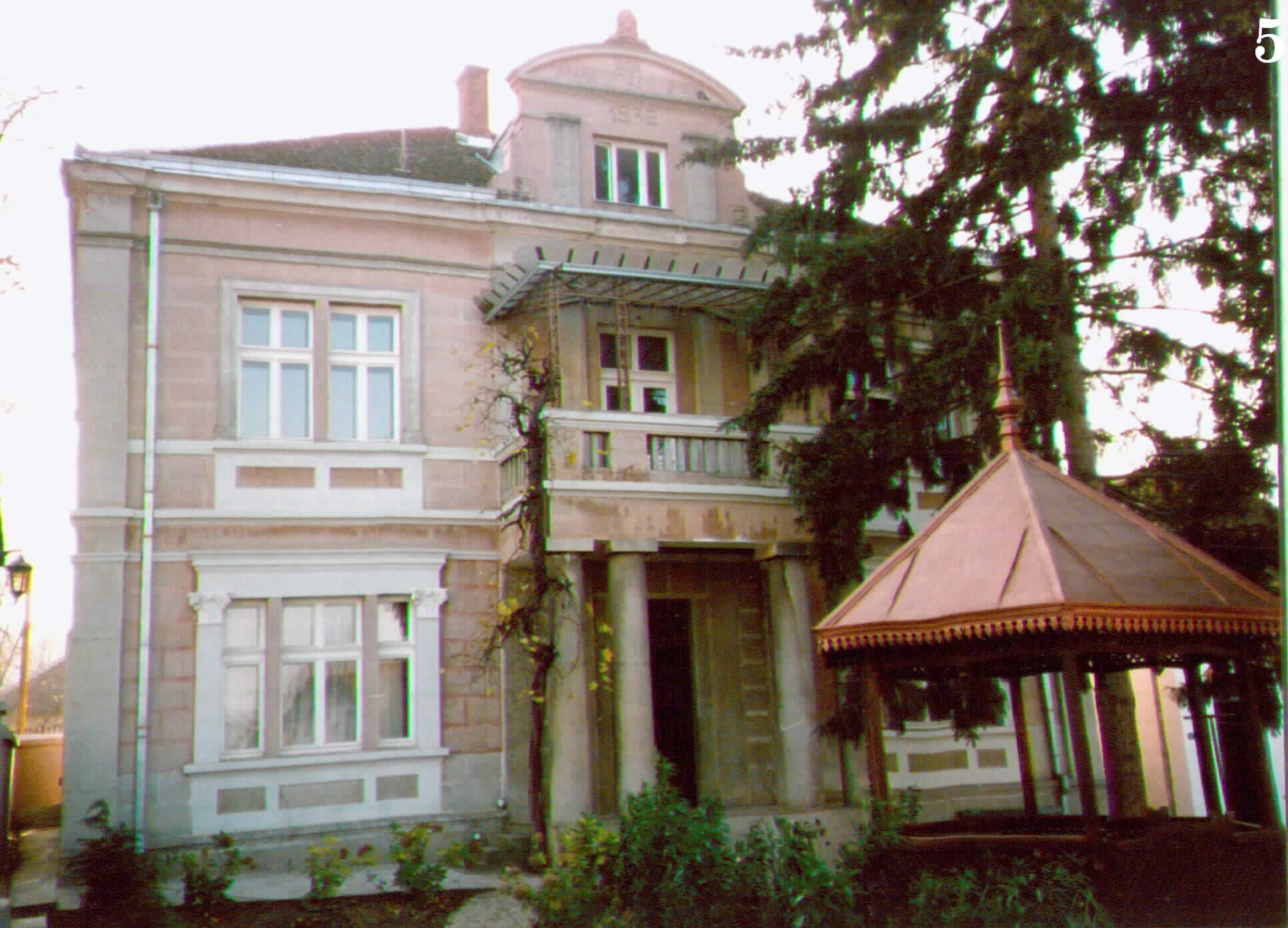 The family house of Radenković brothers in Trnavci village, built in 1932
The family house of Radenković brothers in Trnavci village, built in 1932
Dr ĐORĐE RADENKOVIĆ (1907-1976)
Đorđe Radenković was also born in the village of Trnavci, in Župa, in 1907. His parents were Gvozden and Anka Radenković. He had a younger brother Milun, born in 1913. Đorđe, as well as Milun, showed interest in reading books and studying in the course of primary school education Back in those days, all children in the family were sent to primary school. For this reason, the father decided to send both of his children to higher schooling, which was uncommon at that time. Father Gvozden decided to enroll Đorđe abroad to the prestigious Sorbonne University in Paris, and his younger son Milun to stay in Belgrade to complete medical studies. During his education in France, Đorđe experienced numerous adventures worthy of being described as plots in some Russian classic novels, for example his falling in love with a young French countess, where on a specific day and hour they had arranged a fateful meeting in order to escape to a new life together... However, a wicked winter and carriages stuck in the snow prevented Đorđe from appearing at the agreed time, and the fateful meeting did not materialize... At the aforementioned university, Đorđe studied legal and economic sciences, since those two disciplines were still studied together. Taking advantage of his study time in France, Đorđe went to Bordeaux under the pretext of failing a year, although his studies were going flawlessly, with an already excellent knowledge of the language in which he was capable of writing diaries and poems. The city of Bordeaux back in those days hosted the highest educational institution related to winemaking. Being seriously interested in winemaking, he also graduated from the mentioned school with the desire to return to his homeland and implement that knowledge in the family wine production, which was at its peak at the time, in order to improve it and achieve the best possible quality. Subsequently, Đorđe also defended his PhD thesis and earned the title of Doctor of Economic and Legal Sciences. Then he went to England for additional training, followed by Germany. Years later, taking into account his credits and work on development of winemaking in Serbia and Yugoslavia, he was mistakenly called the doctor of winemaking science, although his basic vocation and PhD degree were related to legal studies and economy.
After the period spent in France, upon returning to Serbia, Đorđe became a civil servant in Belgrade, but he was still in a close and continuous relationship with his family, where he used every moment to stay in his beloved Župa region. In addition to university education, young Đorđe rapidly mastered foreign languages. In addition to French, English, German and Russian, which he spoke fluently and in which he could also write proficiently, he used Italian, Polish and Czech languages... Naturally curious Đorđe had many interests, but his two greatest passions were the violin and hunting. ... although his concept of hunting was an excuse for time spent in nature and with dear people. He used to say: "hunting is the touch of nature and man". A very important item throughout his life was the violin. He started playing the violin as a high school student at an early age, even before leaving for France, and he practised it during his studies, even though his father Gvozden was openly dissatisfied because in patriarchal Serbia from the beginning of the 20th century, any kind of music practice was considered frivolous and music playing had the reputation similar to circus entertainement. As Đorđe lived in Belgrade from the mid-1930s, he used that time, of course hiding it from his father, to master his violin technique and stage expression with the legendary Vlastimir Pavlović Carevac, who at that time was the conductor of the Abrašević choir, and also by profession similarly to Đorđe, a law graduate and lawyer. It is interesting that both of them will have quite similar fates during the coming war, which will be elaborated further below. Sometime in 1938, Carevac also opened the "Savinačka Kasina" tavern in Čubura neighbourhood of Belgrade, where Đorđe would spend time as a young employee of the Ministry of Finance, then the Institute for Foreign Trade, and who, enjoying the magical sounds of Carevac's violin, would build his own style of playing. In the same year, Đorđe became a national parliament representative for Župa county. Unfortunately, already at the end of that year 1938, the black clouds of fascist hegemony were seriously looming over Europe... At the end of March 1941, Đorđe, as a reserve cavalry officer of the Kingdom of Yugoslavia, responded to the call of his homeland and already in the April war he was captured by the Germans in the vicinity of Ćuprija and interned to a labor camp in Germany. His professional colleague and violin mentor Vlastimir Pavlović Carevac experienced a similar fate.
Đorđe and Carevac were not as unlucky as Đorđe's younger brother Milun. Milun entered the war already as a doctor in Kruševac hospital. He delivered medicines and medical supplies to the wounded members of the Resistance movement, for which he was betrayed by his colleague, a nurse and consequently arrested by the German authorities and immediately taken to Banjica concentration camp, from where he was promptly interned further to the infamous Mauthausen, where he was killed in 1942, and his body was burned. Many anecdotes are related to Đorđe's stay in the concentration camp, starting with the fact that he saved his life by translating and knowing several world languages, then that in order to preserve mental health, he founded a camp orchestra with other inmates. Also, he made a primitive distillation device from old kitchen pots and used potato leftovers for spirit distillation , which they used to bribe guards to torture inmates as little as possible. In this way, Đorđe survived to witness the end of the war and the liberation of the camp by members of the Red Army, where again thanks to his knowledge of the Russian language, he avoided walking on foot to his homeland for months, but instead he arrived in Serbia on a Russian tank.
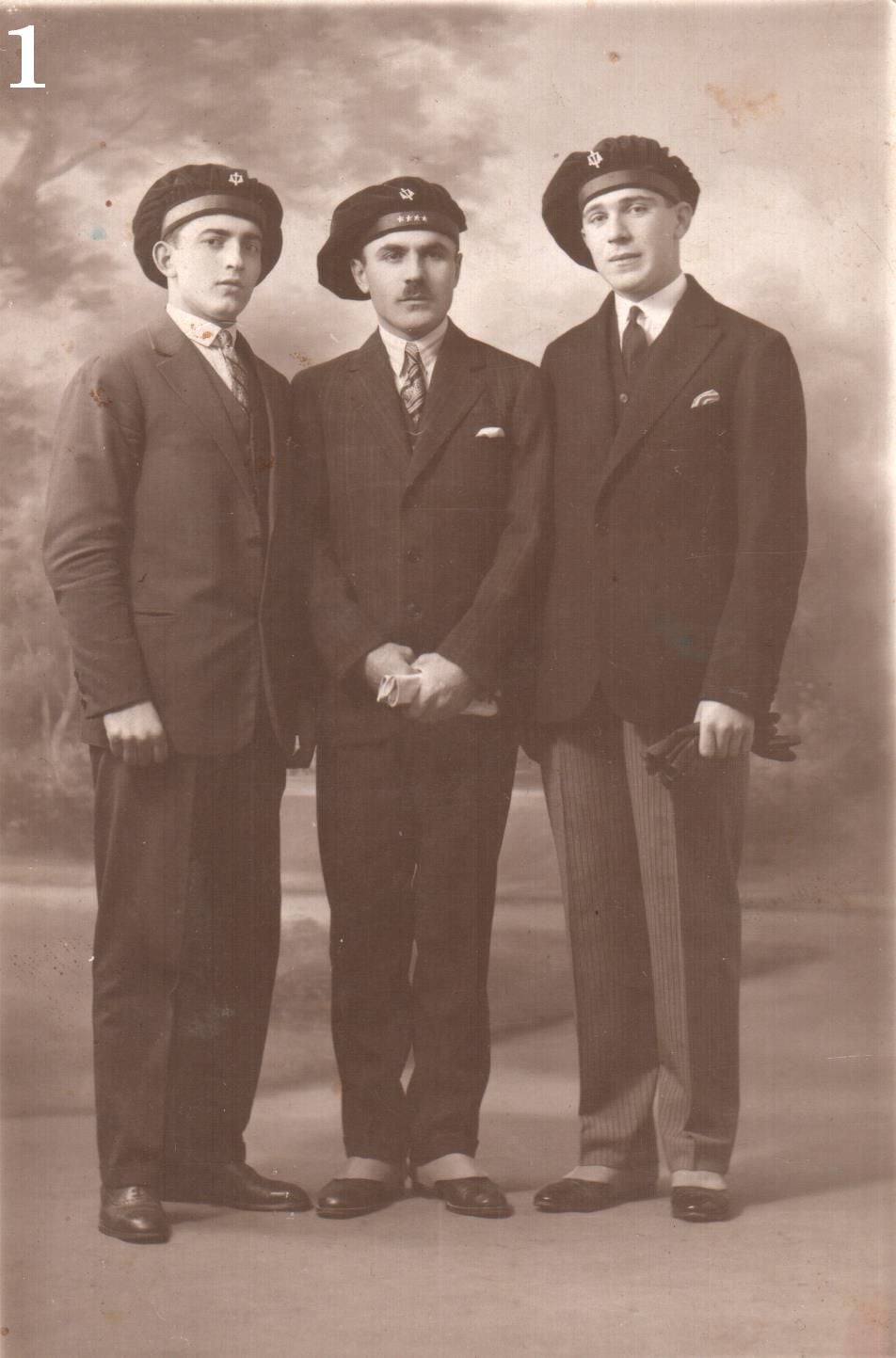 Đorđe Radenković as grammar school student in Kruševac (the first on the left)
Đorđe Radenković as grammar school student in Kruševac (the first on the left)
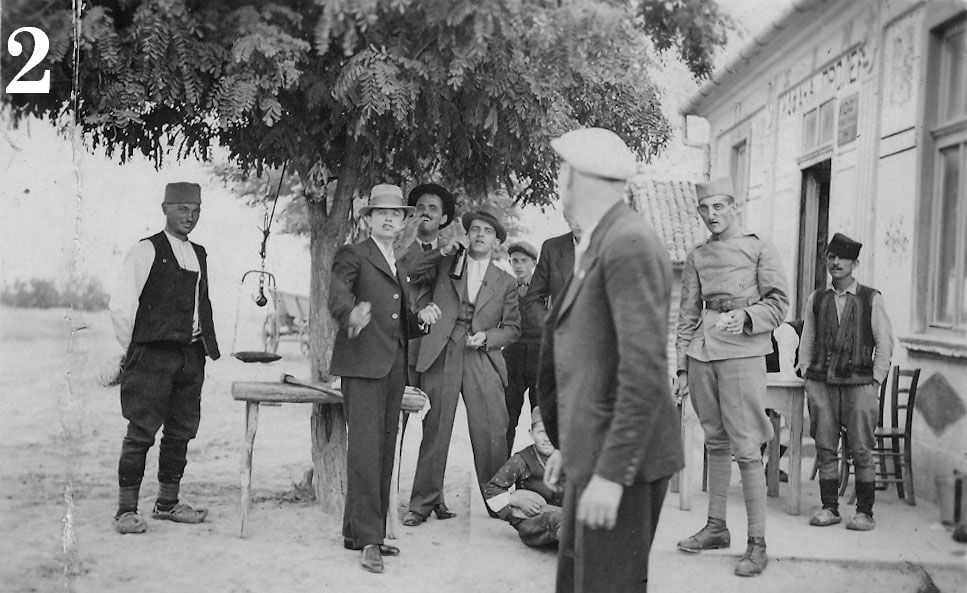 Young Đorđe Radenković jovially with brothers and friends (in the middle, holding a bottle)
Young Đorđe Radenković jovially with brothers and friends (in the middle, holding a bottle)
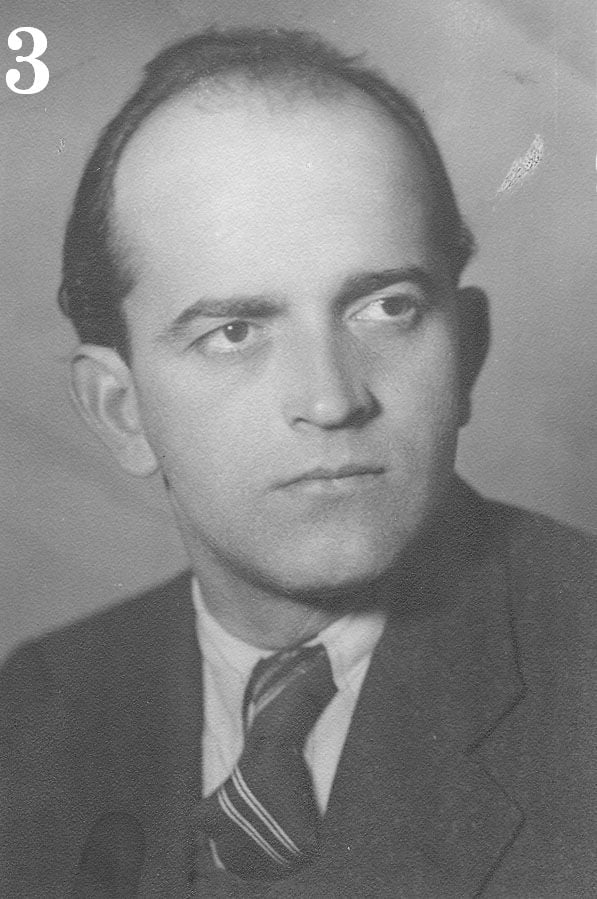 Đorđe Radenković
Đorđe Radenković
 Đorđe Radenković as a civil servant, strolling in the streets of Belgrade (the first on the left side)
Đorđe Radenković as a civil servant, strolling in the streets of Belgrade (the first on the left side)
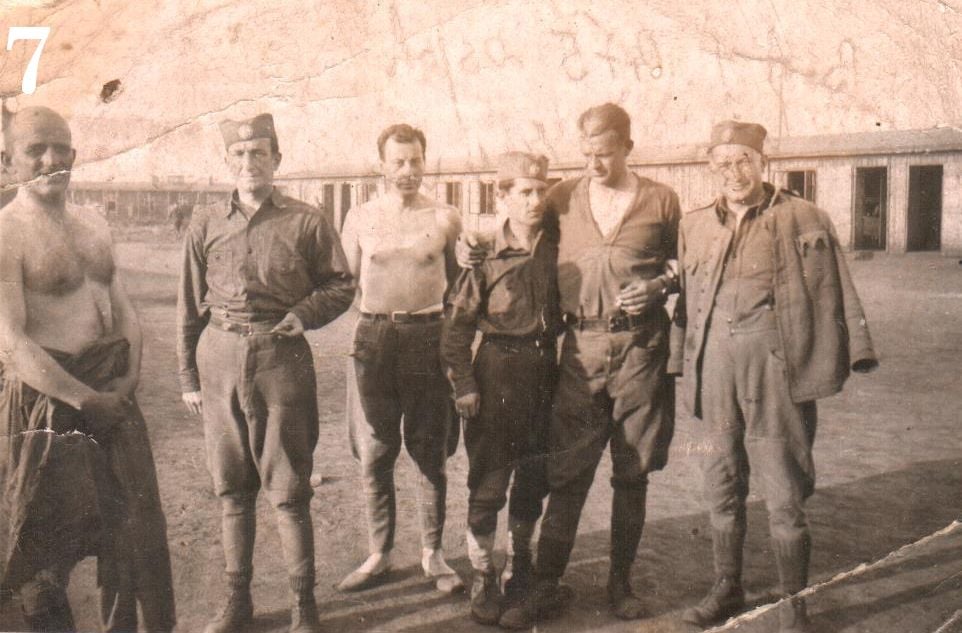 A rare photo of Đorđe Radenković in the labor camp in Germany with fellow inmates (the first on the left side)
A rare photo of Đorđe Radenković in the labor camp in Germany with fellow inmates (the first on the left side)
The end of the Second World War brings freedom, but also many new temptations and challenges in changing the order and new socio-political constraints that became standard for functioning of society and economy. Đorđe arrived from captivity and immediately got involved in helping family whose business suffered from non-functioning during the war years. The Radenković family were trying to sustain the cooperative and reestablish their activities. His father Gvozden, the head of the cooperative and the pre-war mayor of Trnavci municipality, together with his brothers, as a sign of grief and in memory of his son Milun, who had died in Mauthausen, built a stand-alone belfry tower next to the village church dedicated to St. Mark, which did not have a bell tower. At the same time, the brothers decided to build a family tomb whose crypt initially had 24 places, whilst the number of places increased to 64 with latter expansion in 1995. The chapel of the tomb is located in a place that dominates surrounding landscape. From there, one can see the most beautiful vineyard plots in Župa, such as Gložane, Carigrad, Varina as if the late vinegrowers could observe until eternity their estates where they laboured hard during their lifetime. However, the establishment of new economy principles and redistribution of capital and resources already in 1946, in the first, still unorganized and chaotic wave of nationalization based on the principle of a three-member commission with the county seal, the Radenković family were deprived of their entire property related to the family cooperative "Braća M. Radenkovic". Wine cellars with a complete inventory and goods in stock were confiscated. Family members were left only with property within the so-called maximum permitted property required for private needs and a house with a garden. Due to a combination of circumstances, the family cooperative lasted until 1952, the same year when Trnavci municipality was also abolished and merged with Aleksandrovac municipality. After another wave of nationalization, the brothers divided remaining family assets by mutual agreement. Five independent families continued working in harmony and producing modest quantities of wine. In 1946, Đorđe married Milena from the village of Rataje in Župa, who descended from the Miljković family, another reputed family of winemakers and wine merchants which kept close friendly ties with the Radenković family. Miljković family also produced and sold wine and brandy, but in a much smaller quantity than the Radenkovićs. Their family had fewer members, but the quality of their wine was recognized and awarded at numerous wine exhibitions in the country and abroad. Among these awards, the most famous is certainly the Grand Prix, an award from the World Expo in Paris in 1939. Before the war, Milena's father, Miodrag-Pupa Miljković, also had a wine and rakija shop in Belgrade, in the immediate vicinity of the Majestic Hotel. In contrast to numerous and politically strong Radenković family members, whose arrangement and way of functioning were jokingly compared to stubborn patriarchal Sicilian families and who suffered only materially from the new social order, the small Miljković family and its head, Miodrag-Mile Pupa, due to their stubborn refusal to accept the new social order without fair elections, suffered immensely and paid even with their heads their disobedience... The fact that during the war, members of the Jastrebac Partisan detachment were hiding in their house from the Germans, came to no avail. Among these partisans was also the so-called the father of the nation, and later prominent dissident and academic Dobrica Ćosić, otherwise Milena's schoolmate. Đorđe and Milena, who both lived in Belgrade before the war, continued their life together in Belgrade, where the Radenković family owned an apartment building in Slavija neighbourhood, which also housed one of the wine cellars, and which was located right next to the former cult tavern Orač. They soon got two sons. Đorđe didn't return to politics, but nevertheless, as a professional expert and regardless of his political ineligibility and no membership in the Communist party, he was invited to participate in the revitalization and restoration of new winemaking capacities of Serbia within the team of the Ministry of Economy, with an emphasis on activities aimed at wine export.
Very quickly he received a specific challenge in the form of the revitalization of Bruno Moser's wine cellar in Zemun. It is interesting that one of his uncles was sent to the aforementioned cellar before the war to master wine making according to modern oenological principles that the enterprising Moser was always the first to implement in the country. Due to his close family relationship with the German mayor of Zemun in the period of nazi occupation, Bruno Moser fled the country during the war, leaving behind his entire property. The company Narodno vinarstvo i podrumarstvo, later abbreviated NAVIP, was formed on the remains of Moser's wine cellars. Đorđe, on the basis of his language skills, experience in foreign trade and pre-war acquaintances, managed to realize the first export of bulk wines of the newly founded company, more precisely to Germany. Later on, export of wine to Germany continued and those Navip wines were labelled as a brand of the most famous retail chains like SPAR. Đorđe rose from export director to deputy general director of the company, who certainly always had to be a member of the Communist party. However, very soon Đorđe received a new challenge. In the wine cellars of several pre-war Kruševac winemakers' families, the largest of which was that of Velisav Jovanović-Rajs, a single bulk wine purchase point was established in 1947, where Đorđe, upon his arrival, discovered a quantity of about 50 wagons of wine, which, in the absence of a clear sales strategy, were stored in poor conditions and there was no further dilemma that it could only be distilled. The company ŽUPSKI RUBIN (later just RUBIN) was formed on the foundations of that economic entity in 1955. Đorđe was appointed, similar to his role in Navip, as the export director, however, with the knowledge he acquired in France related to wine and spirits, he was very actively involved in the creation of a new product from the distillate, which came to market ultimately at the end of 1959 under the name Vinjak. There are several official and unofficial versions of the story about his precise role in the creation of one of the subsequently strongest brands of SFR Yugoslavia. According to indirect knowledge based on conversations at home and testimonies of family members, as well as the memories of his associates at the time such as Radoš Grujić, director of viticulture, later also director of R&D sector, Gvozden Radenković, owner of the Bela Kula winery and a descendant of Radenković, testifies that Đorđe's role in the creation of Vinjak was in the technological sense far greater, but there is no material evidence for that except the testimony of former associates. In 1960, Đorđe, along with the position of export director, also took over the position of general director for a while due to departure of the previous director to study!? In any case, it didn't suit anyone, so after several negative comments from the top ranks, Đorđe decided to continue his work only as an export director and in the following years devoted himself to the export of Vinjak, mainly to the market of the USSR. As for sales on the domestic market, which are nowadays associated with fairy-like tales of instant sales and popularity, the truth was quite different...
A new and unknown product, regardless of its quality, was very difficult to get positioned on the market and accepted by restaurant and tavern owners. Hence, Đorđe used tricks learnt both from theory books and tricks of the trade learnt in taverns. An anecdote was personally shared by the now deceased legendary Krsta Crnčević, the long-time director of the iconic Belgrade restaurant "Tri Grozda", during a chance meeting in a pub. Đorđe, with the already built-up reputation, invited Krsto, in those days a young newly appointed director of a catering company in Kragujevac, to a meeting and told him; Krsto, I'll send you an invoice for this large quantity of Vinjak, you'd just receive it and put it out there for everyone to see. The frightened Krsto was anxiously thinking how he was going to pay such invoice and who would buy such a large quantity of Vinjak... Đorđe replied to him: Just register the invoice without paying and don't worry... And so be it. As rumor spread quickly in the guild even at that time, the rest of the restaurant and tavern owners who at first refused to buy Vinjak, now thought that Krsta had some insider information and quickly started ordering Vinjak in large quantities. Đorđe then called Krsta, thanked him, told him to cancel the invoice and to place an order for a reasonable amount of the now well-kown Vinjak. In parallel with these activities, Đorđe worked in the Yugoslav wine association to export wine from all over Yugoslavia and was a member of many export delegations that offered other agricultural products such as grafted vine plants, especially on the USSR market, where Đorđe already had considerable success with the sale of Vinjak. In this way, he closely cooperated with some of the legendary names of Serbian wine industry, such as Dragoslav Drago Milisavljević, who was almost his peer, also educated in France, but in Toulouse as a vinegrower, and also a fellow countryman from Župa from the same village as his wife Milena. One of those great personalities was Prof. Lazar Avramov, from whom Gvozden Radenković heard numerous wonderful romantic and humorous stories from those travels around the world. At one of them, precisely in Russia, there was an incident where a young member of our delegation, trying to keep up with the Russian hosts in drinking, in a state of heavy intoxication, grabbed a member of the Russian delegation from the front in an inappropriate way. After an unpleasant situation and almost a scandal, the nervous Đorđe, as the only one who spoke the language, decided to personally apologize and see if the apparently lost, but very large export business could be saved. The lady opened the door to her room and while Đorđe began to twist the bouquet of flowers apologetically, she casually said: "Relax doctor, you have an excellent product, we are doing business, and the young colleague just drank in excess... after all, he didn't do anything too terrible, you know, that's the place a woman gets grabbed." Confused, but relieved, Đorđe shared it with the members of the delegation with relief.
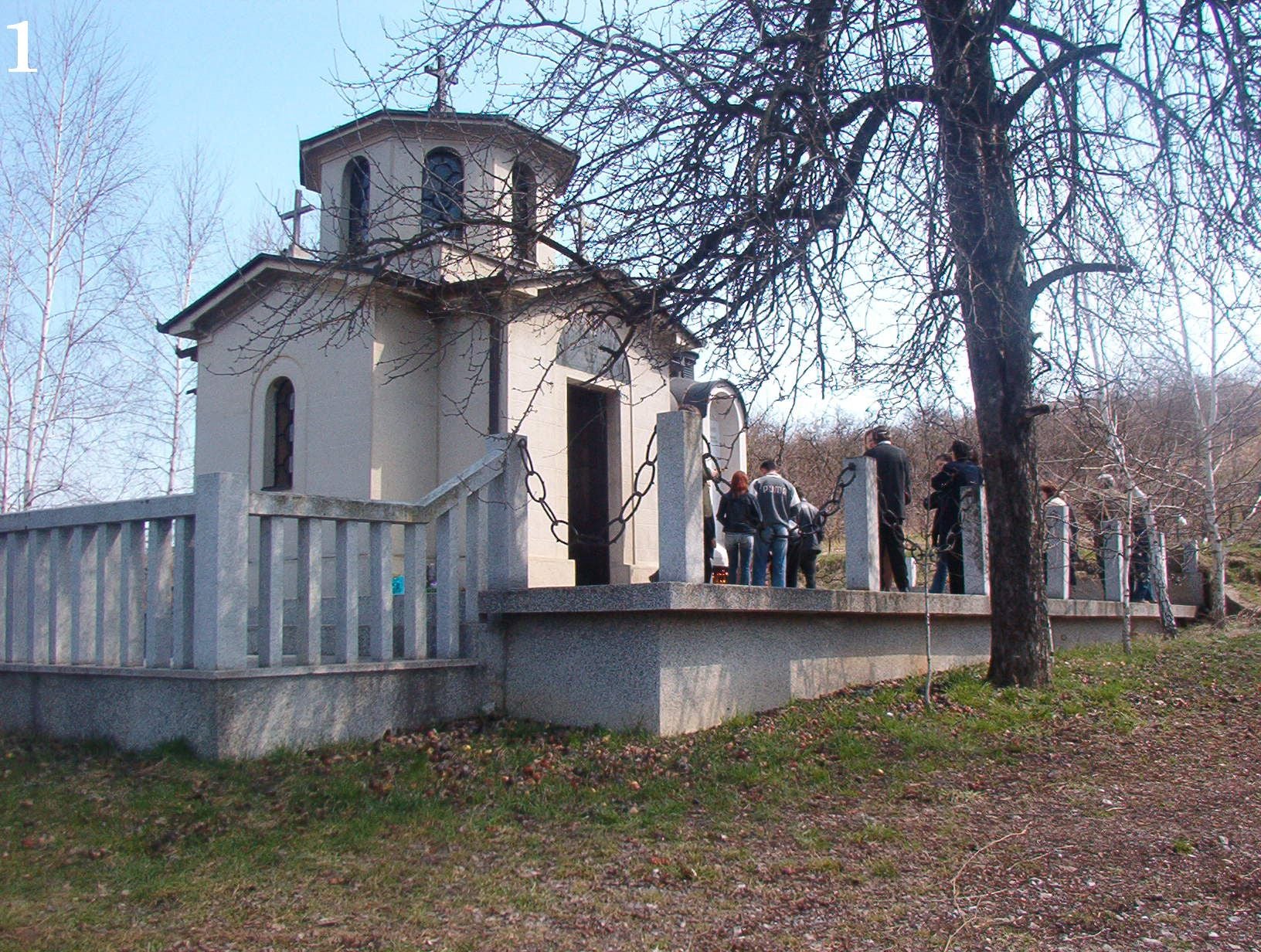
Chapel of the Radenković family tomb
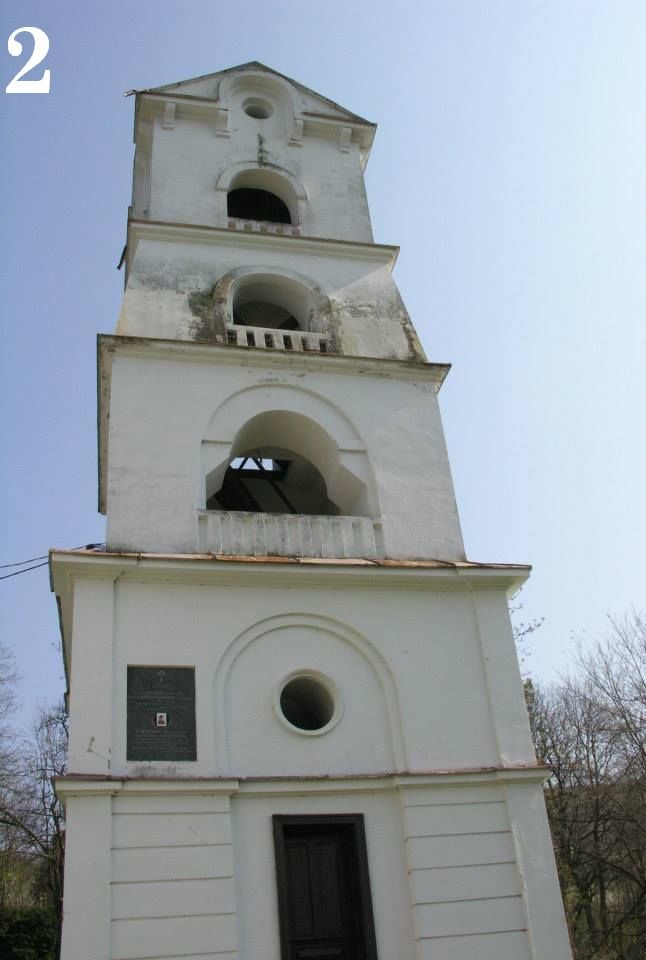 Belfry tower near the church in the village of Trnavci
Belfry tower near the church in the village of Trnavci
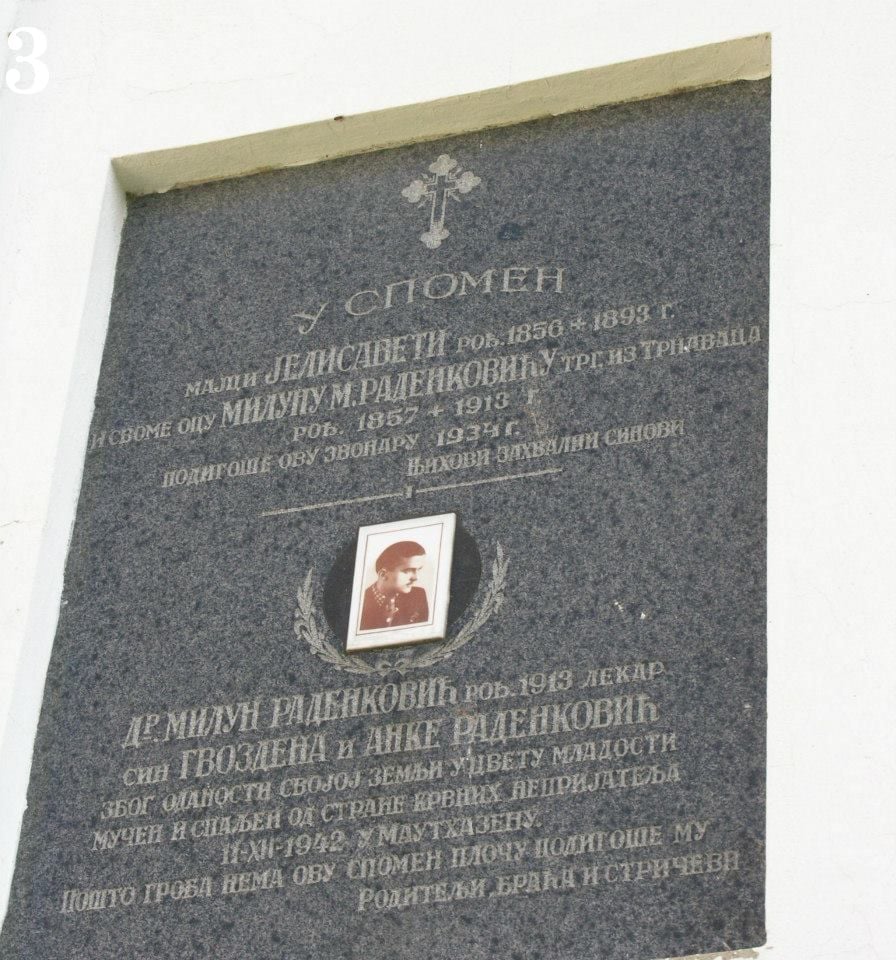 Memorial plaque on the belfry tower
Memorial plaque on the belfry tower
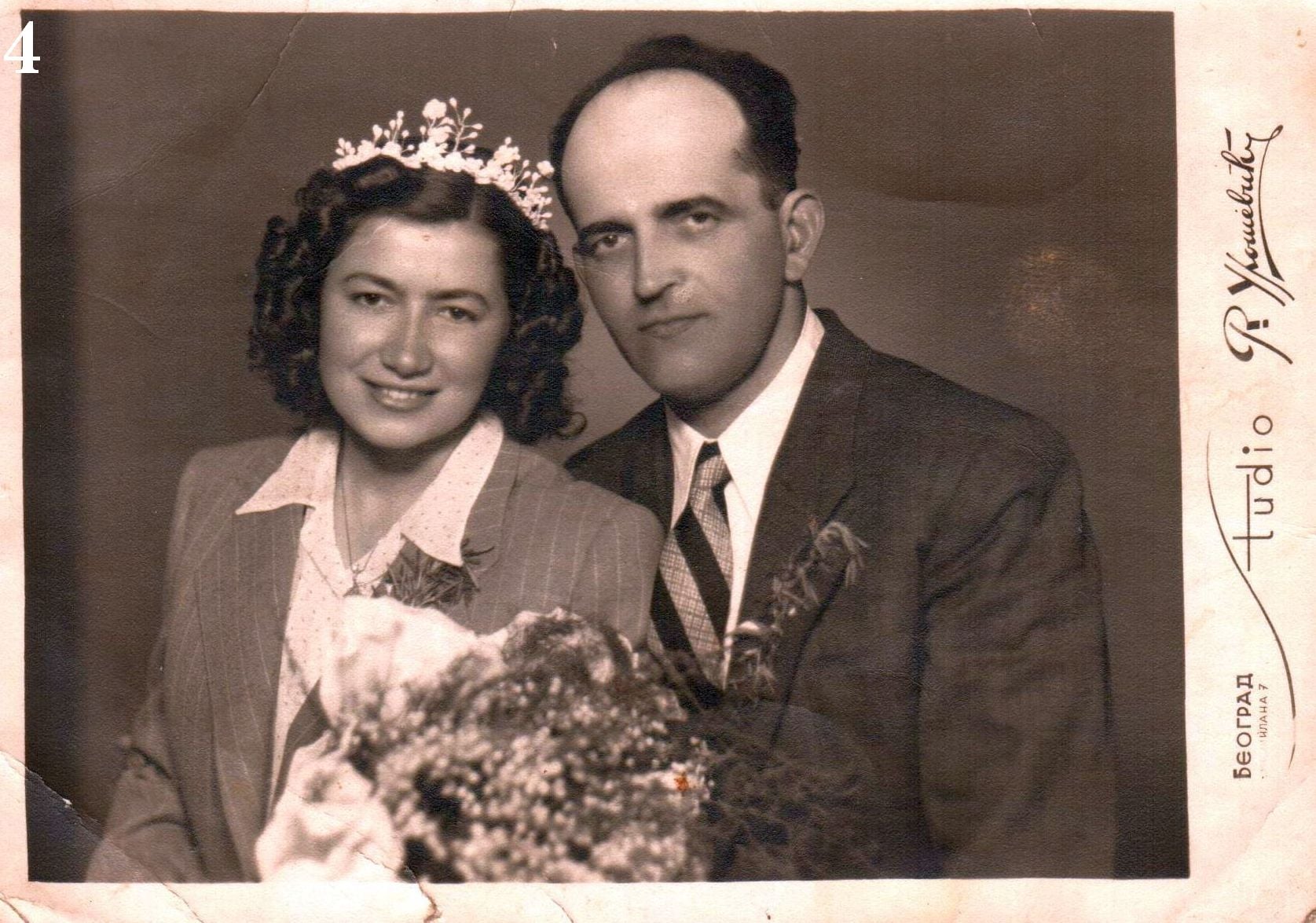 Wedding photo of Đorđe and Milena Radenković (born Miljković)
Wedding photo of Đorđe and Milena Radenković (born Miljković)
 Golden diploma for Riesling wine made by Miljković family at the wine exposition in Belgrade in 1931
Golden diploma for Riesling wine made by Miljković family at the wine exposition in Belgrade in 1931
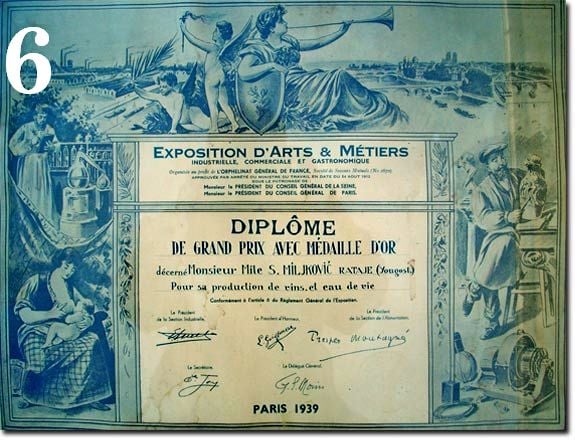 Grand Prix in Paris in 1939 for wine made by Miljković family
Grand Prix in Paris in 1939 for wine made by Miljković family
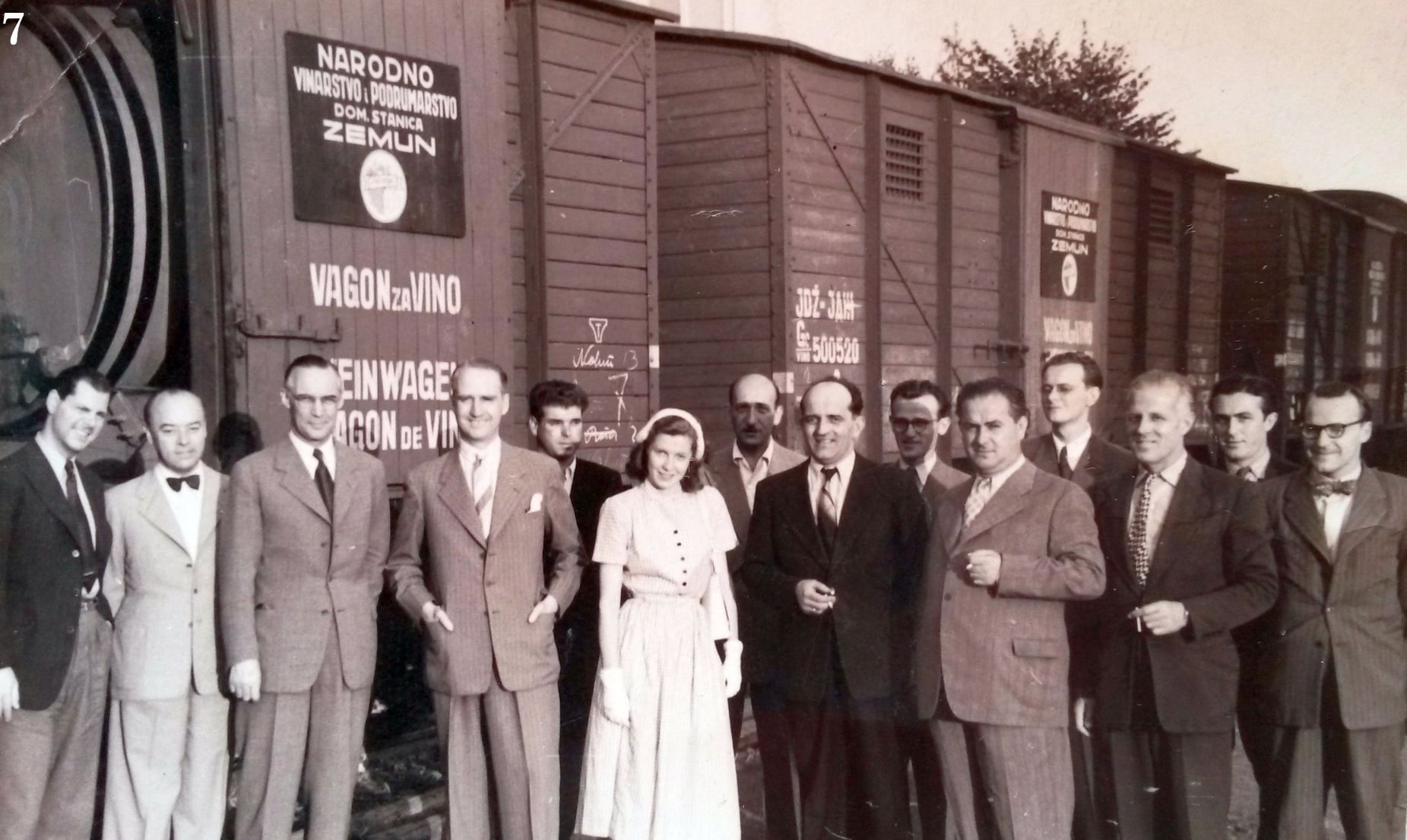 Đorđe Radenković with associates near the train carrying wine intended for export to Germany (in the middle wearing a dark suit)
Đorđe Radenković with associates near the train carrying wine intended for export to Germany (in the middle wearing a dark suit)
During his working life, Đorđe published a large number of articles and works in professional journals and scientific magazines. In 1962, whilst finding inspiration and peace during a hot summer in Župa, Đorđe wrote a book entitled "WINE - contemporary problems of winemaking in the world and in our country" as a compilation of his life and professional experiences related to wine and wine trade. The foreword was written by the famous Vanja Žanko, president of the Association of Herzegovinian and Dalmatian winemakers, whose wines Đorđe also helped to find their way to foreign customers. There is almost no wine company of the time that did not support printing of the book as a sign of gratitude, wineries from Slovenia through Istria, Dalmatia, Herzegovina and all parts of Serbia... With retirement, Đorđe's activities didn't cease. The peak of his career is actually something he may have enjoyed the most. Just when he thought he would find some peace, he received an invitation from a young fellow countryman, Božidar Boža Mihajlović, a descendant of a prominent Župa family, to help the development of "Vino Župa" company in Aleksandrovac, to which, by a twist of fate, the wine cellar confiscated from his family was assigned. Đorđe certainly rose above that and accepted the task with pleasure, in the sincere desire that Župa region, which he loved above all else, would develop economically and build and increase reputation of its viticulture and winemaking. Young managers of "Vino Župa" enjoyed Đorđe's company, jokes and life experience.
Perhaps one of Đorđe's last contacts with development of Serbian winemaking and viticulture was his heartfelt help to the young, but extremely strict and enterprising Vitomir Marković, known as Vita Bik, who was then the director of Smederevo wine giant "Godomin". In those years, Vita, with serious political support behind his work, entered into consolidation and the purchase of land on which, according to the project, 500 hectares of vineyards were planned, which, as a raw material base, would support construction of a new modern wine cellar in Kolare in an extremely strategic place right next to the highway . The vineyard project and varietal composition in the vineyard was carried out by the already mentioned legendary Prof. Lazar Avramov, and Đorđe supported the whole enterprise with his experience regarding the type of product and sales strategy.
Đorđe spent the last days of his life in his beloved Župa, peacefully, with books, sometimes a violin and a glass of Župa rosé, in the company of his wife Milena, who was a great support to him in every way. She supported and withstood all the challenges of his demanding job, long journeys and absences, she raised their sons, and even though she lived in Belgrade, she produced no less than 20,000 liters of wine every year in a wine cellar in Trnavci that belonged to Đorđe. She made wine without any influence or help from Đorđe, with the knowledge and experience she brought with her as an offshoot of the extremely respected Miljković wine house, which has already been elaborated. She had to, because in contrast to the seemingly high managerial function, Đorđe's salary was only slightly higher than that of a clerk, and she had to raise children. Đorđe Radenković died in his apartment in Belgrade in the spring of 1976 as a result of a hip fracture in Župa. His bones and health were quite fragile as a result of his four-year stay in the German labor camp. He was buried in his village, at the foot of Trnavačka Čuka where he used to hunt as a young man, and next to his ancestors with a view of the vineyards he adored. Following his death, neither his wife Milena nor his sons unfortunately continued on his path in a professional sense, because as a consequence of nationalization and new circumstances for the family, they were educated for something completely different.
One of the sons discovered his wine roots at least at his mature age, and revived family wine tradition in an extremely remarkable way. Milun and Đorđe's grandson Gvozden, on the wings of the renewed wine renaissance in Serbia after the fall of Communist system, started commercial production of wine under the label WinEco Radenković. The winery's strategic goal was to export wine to Russia and Asian markets. A wine cellar with a capacity of 500,000 bottles was built, equipped with the most state-of-the-art equipment at the time to ensure controlled fermentation, cold stabilization, and the use of inert gas. Plans for wine tourism were also developed with construction of a spacious tasting room. The vineyards of WinEco Radenković winery, with the surface of about 35 hectares, are located in Župa and on Biserno Ostrvo. At the very beginnings of the contemporary Serbian wine scene, Carigrad and Varina wine labels from WinEco Radenković winery were widely known for their quality and for numerous wine lovers a symbol of the awakening of the Serbian wine tradition with a red blend that contained autochthonous Prokupac, Cabernet Sauvignon and Merlot (Carigrad) as well as a white blend containing Italian Riesling and Smederevka (Varina).
At the end of 2017, a tower with a vista and the building of Bela Kula winery sprung up on the hill above New Belgrade. Gvozden Radenković, wanting to maintain the four-generation tradition of wine production, started independent wine business using grapes from old vineyards in Župa, which are located on the historical plots of Varina and Carigrad. Due to easier technical and economic operations, production facilities of Bela Kula winery are located in Belgrade, while the vineyards are in Župa in the village of Trnavci. Bela Kula Winery thus continues and preserves memory of several generations of Župa winemakers from Radenković family, who have been creating Serbia's wine identity for decades.

Gvozden Radenković, the owner of Bela Kula winery
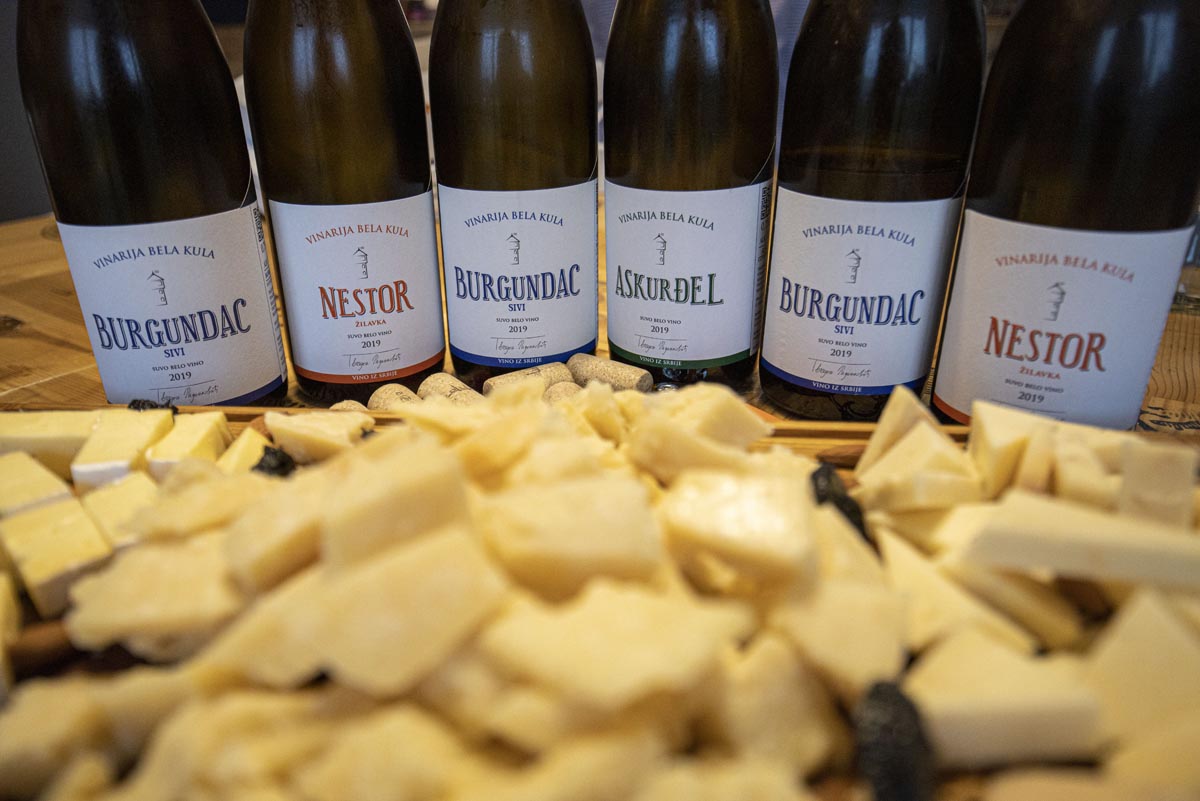 Portfolio of wines from Bela Kula winery
Portfolio of wines from Bela Kula winery
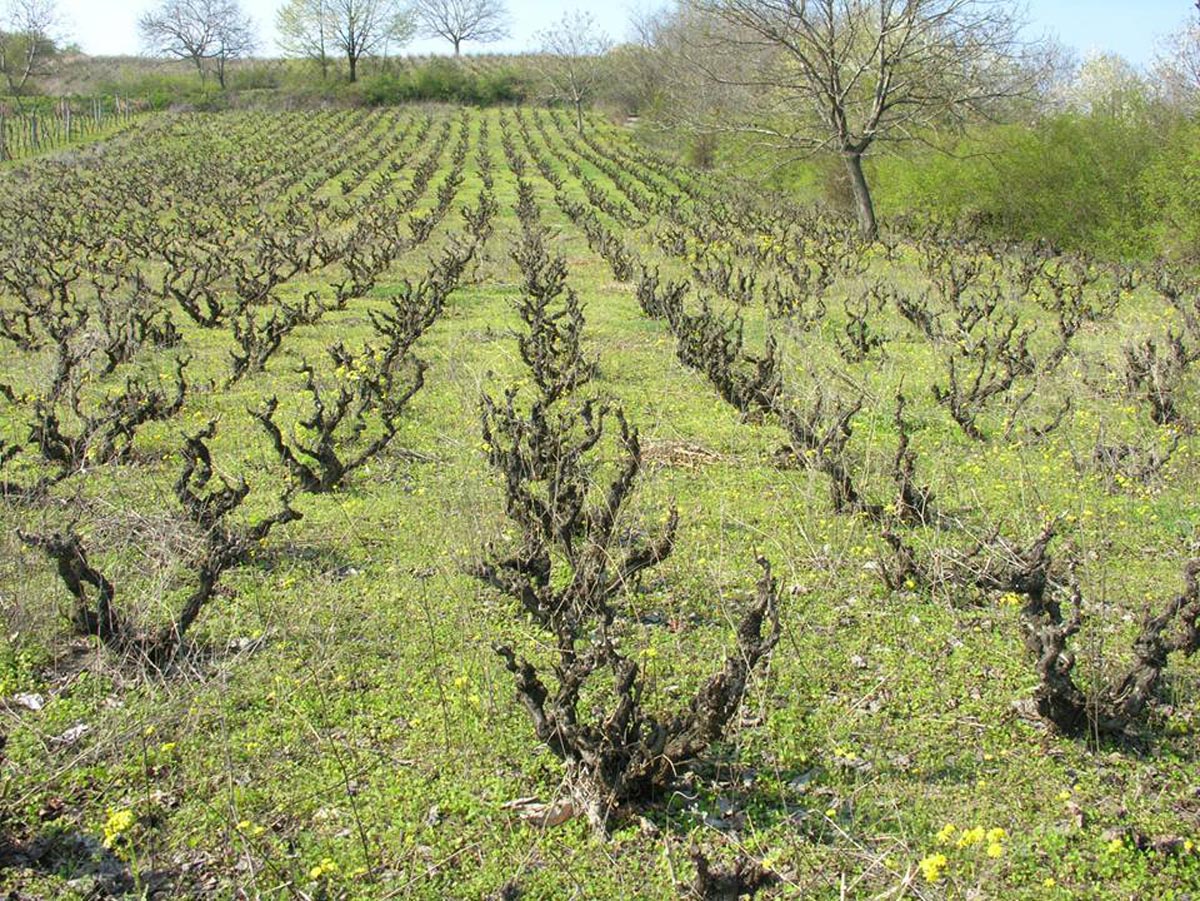 Old vineyard at Varina plot
Old vineyard at Varina plot
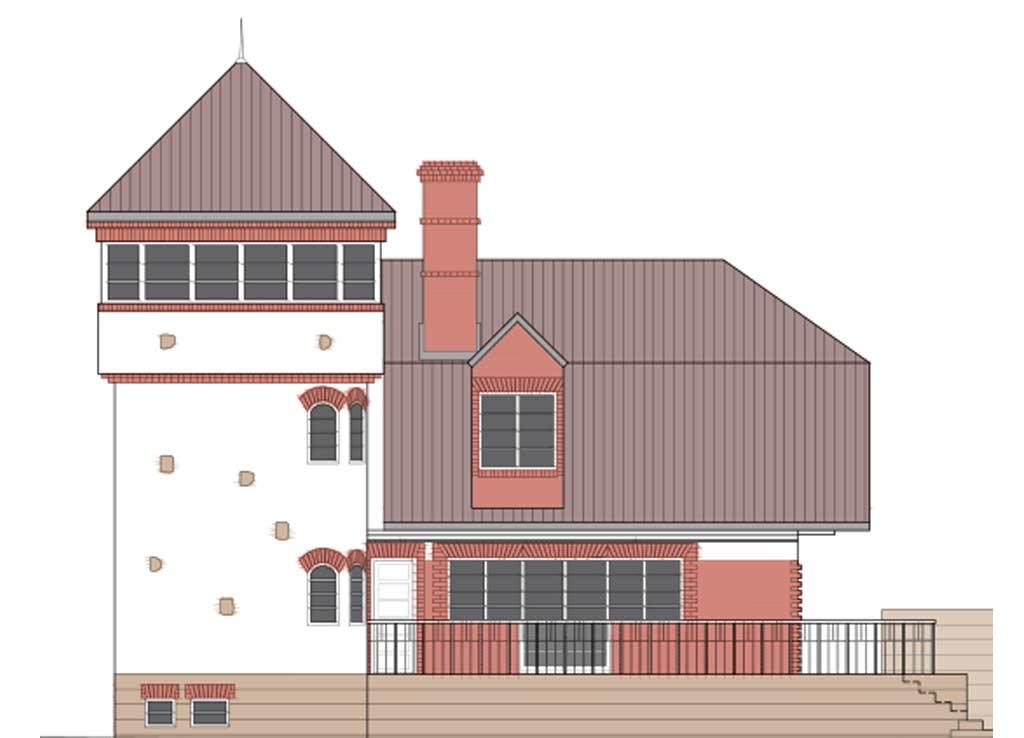 Bela Kula winery
Bela Kula winery
(source text/photo: G. Radenković)

Tomislav Ivanović
Awarded wine writer, wine critic and contributor to selected wine magazines. WSET3-certified author and editor-in-chief of www.vinopedia.rs. Member of Vojvodina Sommelier Association. Juror in national and international wine competitions. Lecturing about wines of Serbia and the Balkans. Local partner of Wine Mosaic organization. Co-founder of International Prokupac Day.

Pročitajte i druge članke iz ove rubrike:
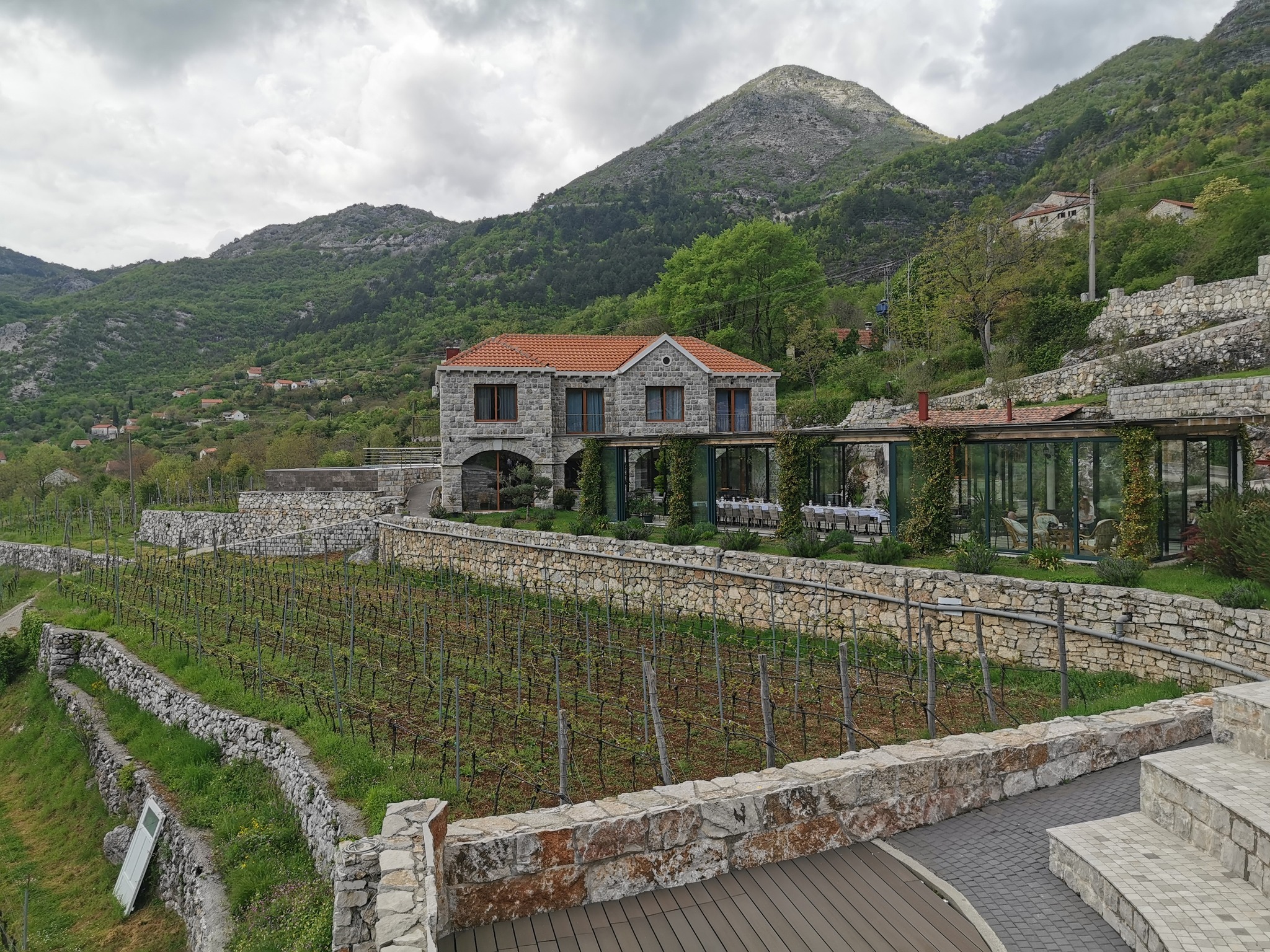

KRATOŠIJA PROBUDILA CRNOGORSKE VINARE
PROČITAJ VIŠE
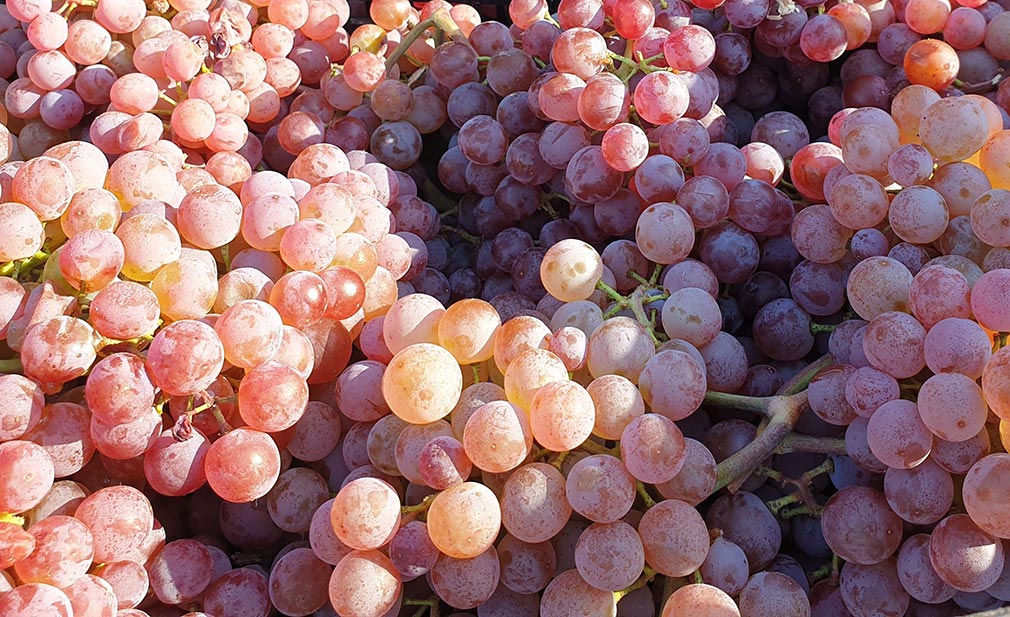

VINOPEDIA TOP 10 2024
PROČITAJ VIŠE
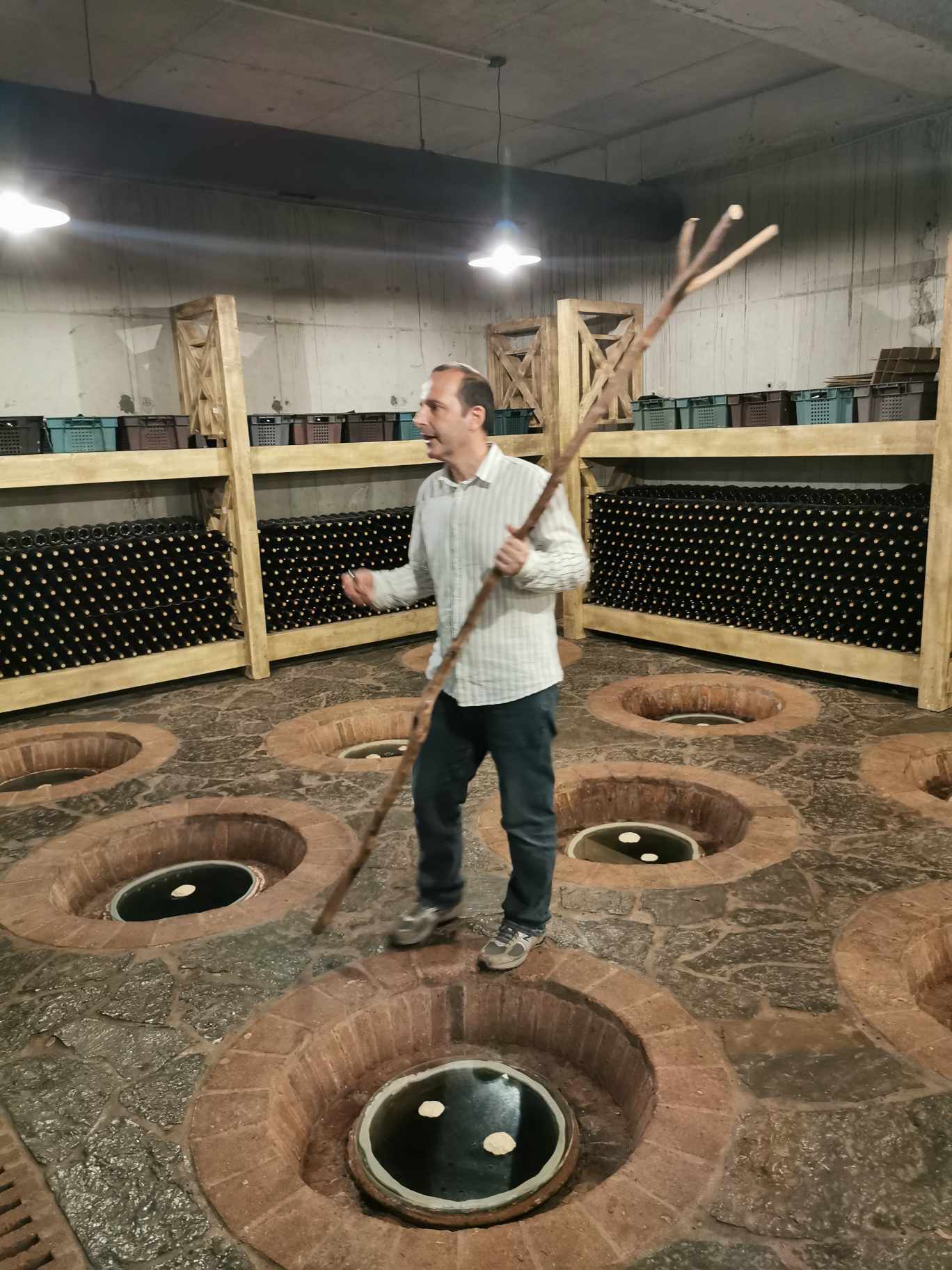

GIUAANI - VINSKI TURIZAM NA GRUZIJSKI NAČIN
PROČITAJ VIŠE


SPASIMO STARE VINOGRADE SRBIJE
PROČITAJ VIŠE
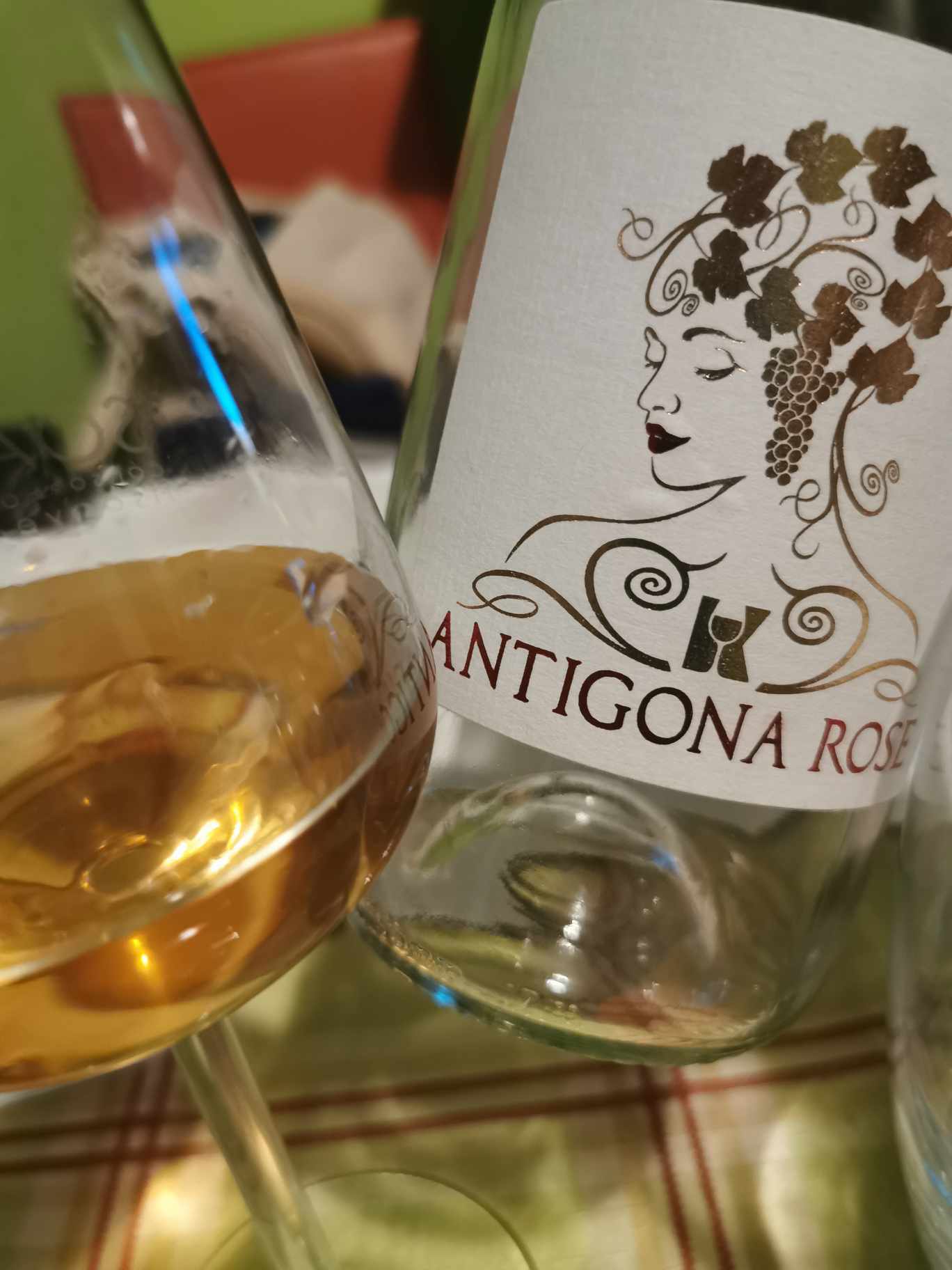

NAŠLI SMO ANTIGONU IZ ORAHOVCA
PROČITAJ VIŠE
Winner MILLESIMA BLOG AWARD 2016

Pobednik MILLESIMA BLOG AWARD 2016
VINO & FINO wine personality of the year 2016

VINO & FINO vinska ličnost godine 2016